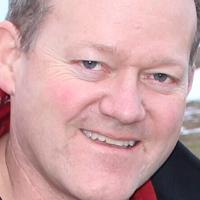Last fall I had the privilege of drifting down a stretch of the Blackfoot River where we caught many large trout (catch and release) and soaked in the natural peace and beauty of the landscape. At one point we rounded a bend in the river to see a local angler landing a large rainbow. As we passed, we offered customary polite greetings only to be treated to a tirade of resentment about how fly-fishing guide services were destroying the fishery.
Among other things, I was struck by the grumpy fisherman’s assertion that things were a lot better when he first came there 32 years ago. My guide of nearly 15 years saw my biting retort coming to the surface and he signaled for me to hold my tongue … that the person was simply not worth the energy. But I do wonder if this individual ever gave a thought to what the peoples of the Blackfoot Confederacy thought about his arrival 32 years ago. I doubt it was complementary.
If asked to consider a Native viewpoint of his arrival, my guess is that the angler’s response would be one of dismissal if only due to a lack of appreciation of the injustices that have been meted out to Native peoples of North America. Scotty Anderson’s obtuse column (April 2), “Recognizing something is stolen doesn’t make it OK,” encapsulated a similar dismissive tone that Tiffany Midge (April 16-17) thoroughly and justifiably trounced with her column, “My apologies if you’re bored by land theft, genocide.”
As a privileged white male who owns a small plot of land outside of Pullman that was undoubtedly traversed at some point by the peoples of the Middle Palus Band, I’m becoming both more aware and more educated about the heritage of this landscape. I can trace my increasing attention to a couple years ago when, while attending an event at Washington State University, a speaker shared an acknowledgment of the fact that WSU is located on the homelands of Native peoples throughout the state.
Injustices of the past can’t be addressed until they are openly recognized. Reminding us regularly about these injustices keeps these issues in the forefront of our thinking. With that comes acknowledgment, respect and interest in how to redress some of the wrongs of the past.
Anderson did make one good point that simply acknowledging a wrong does not make it right. I have worked at a land grant university for my entire career, and I’m dedicated to the land grant “mission,” but I only recently started to familiarize myself with the legacy of that mission and how reparations might be made for the sins of our past.
Both WSU and the University of Idaho opened in 1892, after the Morrill Act of 1890 transferred title to 90,081 acres and 87,445 acres of Native land, respectively. Not all tribes were monetarily compensated, and the grand total for both states was a measly $3,913 ($123,627 in 2022 dollars). WSU is the beneficiary of timber revenues from about 80% of the original land grant (about 4.5 million annually). Title is still held for about 38% of the original UI land grant.
Outright returning these lands to Native peoples is unlikely to happen given the political, statutory and constitutional barriers, but that isn’t the only option to think about. For example, revenue from these lands could be used to support Native American college students. In 2018, Native students made up less than 1% of the student enrollment at both of our land grant universities. In Washington, Native Americans make up about 4.1% of the population (1.35% in Idaho).
If land grant revenues could be dedicated to support more Native students, this would need to be done with careful guidance from Native communities to ensure that this aid serves to respect and advance these communities rather than lure away young people. Unfortunately, it is likely that statuary obstacles will impede redirection of land grant revenues for these purposes, at least for the foreseeable future. In lieu of this redirection, both WSU and UI could launch fund-raising campaigns to match land grant revenue with donor dollars that could be invested today rather than in the indefinite future.
Call (he/him) is a microbiologist and father of three. He first discovered the Palouse 38 years ago.
Credit: Source link






























